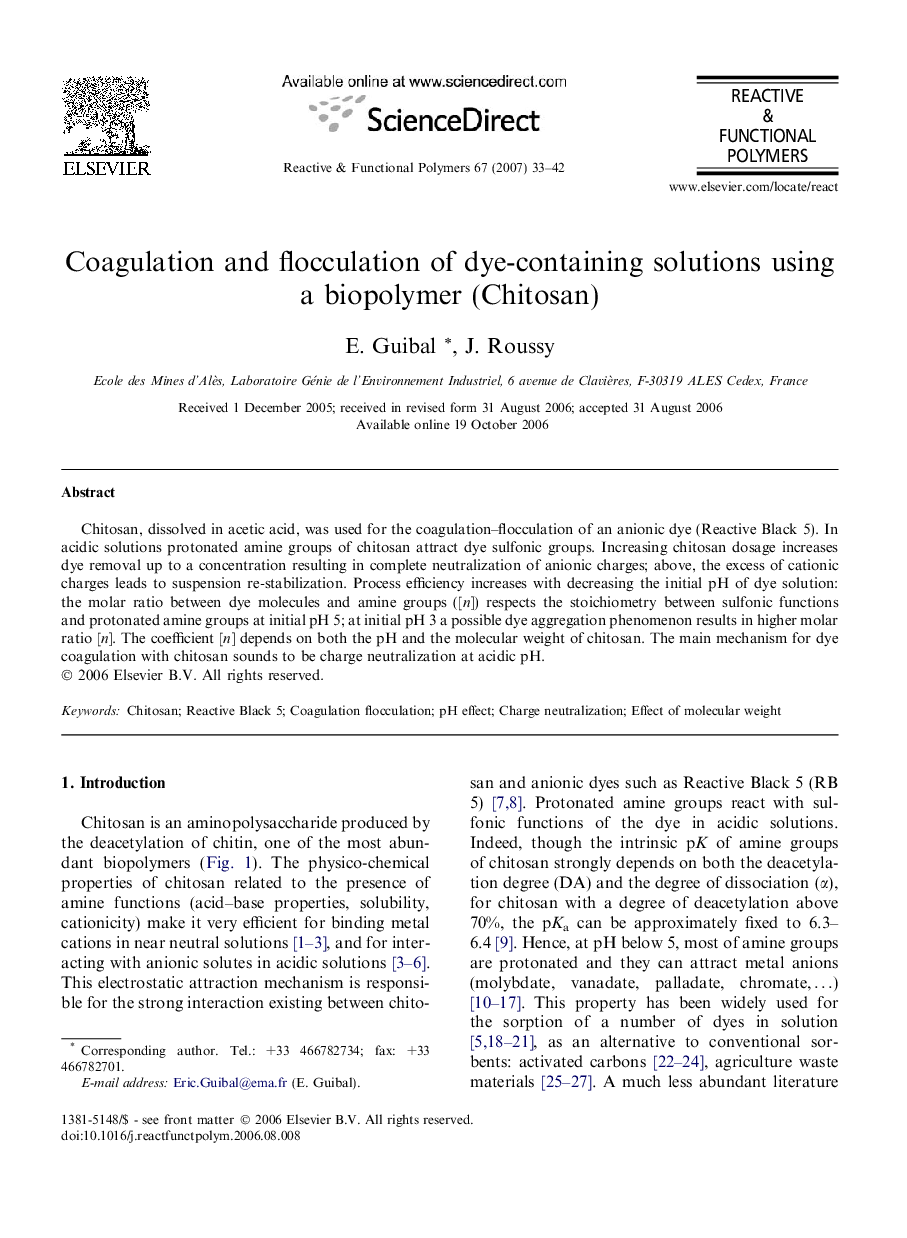| Article ID | Journal | Published Year | Pages | File Type |
|---|---|---|---|---|
| 5211446 | Reactive and Functional Polymers | 2007 | 10 Pages |
Abstract
Chitosan, dissolved in acetic acid, was used for the coagulation-flocculation of an anionic dye (Reactive Black 5). In acidic solutions protonated amine groups of chitosan attract dye sulfonic groups. Increasing chitosan dosage increases dye removal up to a concentration resulting in complete neutralization of anionic charges; above, the excess of cationic charges leads to suspension re-stabilization. Process efficiency increases with decreasing the initial pH of dye solution: the molar ratio between dye molecules and amine groups ([n]) respects the stoichiometry between sulfonic functions and protonated amine groups at initial pH 5; at initial pH 3 a possible dye aggregation phenomenon results in higher molar ratio [n]. The coefficient [n] depends on both the pH and the molecular weight of chitosan. The main mechanism for dye coagulation with chitosan sounds to be charge neutralization at acidic pH.
Related Topics
Physical Sciences and Engineering
Chemistry
Organic Chemistry
Authors
E. Guibal, J. Roussy,
